Cats, our enigmatic housemates for millennia, still harbor countless secrets. Their meticulous grooming habits, consuming up to half their waking hours, are a prime example of feline behavior that often leaves us wondering, “Why?” However, this isn’t mere vanity; for a creature designed to be an ambush predator, cleanliness is paramount for survival.
Delve into the fascinating world of feline biology as we explore the intricate design of the cat’s tongue. Research from MIT and Georgia Tech is shedding light on how this unique organ contributes to a cat’s predatory prowess, even inspiring innovations in human technology.
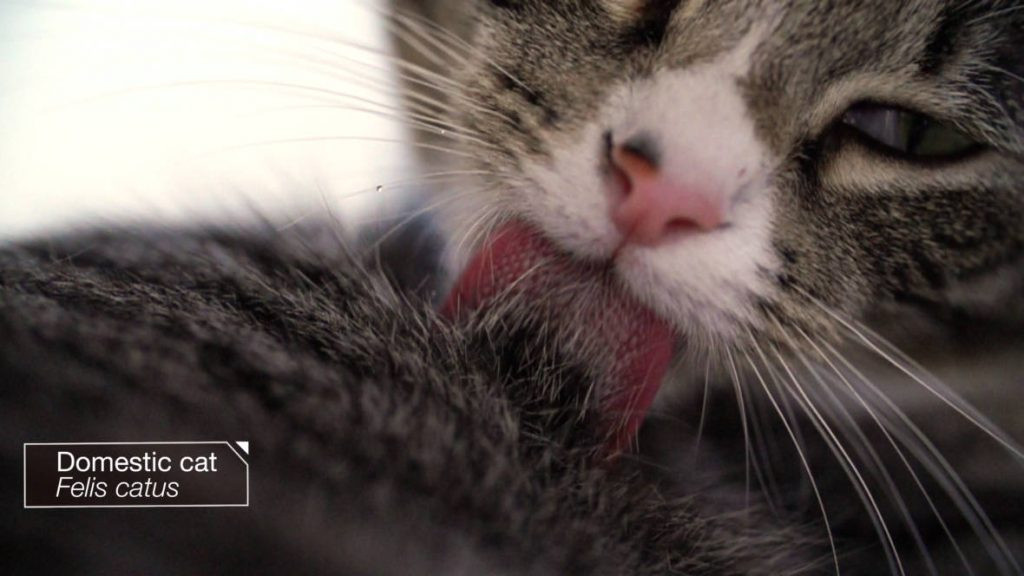 Fur sticks to the cat’s tongue and is detangled as it runs between the papillae. Photo by Josh Cassidy/KQED
Fur sticks to the cat’s tongue and is detangled as it runs between the papillae. Photo by Josh Cassidy/KQED
The Microscopic Hooks: Papillae and the Science of Grooming
Ever been licked by your feline friend and felt that distinctive sandpaper-like texture? This is due to the hundreds of tiny spines covering a cat’s tongue. These spines are called papillae, and under magnification, they resemble minuscule hooks, all pointing in the same direction – towards the throat.
“[Papillae] are made of keratin, just like human fingernails,” explains Alexis Noel, a researcher at Georgia Tech, whose fascination with these structures has led to groundbreaking discoveries.
 The spines on a cat’s tongue point in the same direction, making it easier to free the shed fur off of the tongue and back towards the cat’s throat Photo by Alexis Noel/Georgia Tech
The spines on a cat’s tongue point in the same direction, making it easier to free the shed fur off of the tongue and back towards the cat’s throat Photo by Alexis Noel/Georgia Tech
Noel’s investigation into the cat’s tongue began with a simple observation. During a holiday visit, she noticed her family cat, Murphy, momentarily ensnared by a blanket while grooming. He easily freed himself, but the image of those tiny spines caught in the fabric sparked Noel’s scientific curiosity.
 The magnified side view of a cat tongue shows the claw-like shape of the individual papillae. Photo by Alexis Noel/ Georgia Tech
The magnified side view of a cat tongue shows the claw-like shape of the individual papillae. Photo by Alexis Noel/ Georgia Tech
“The individual spines are even shaped like miniature cat claws with a very sharp end,” Noel elaborated. “They’re able to penetrate any sort of tangle or knot, and tease it apart.” This claw-like structure of the cat’s tongue papillae is key to their grooming efficiency. As a mechanical engineering doctoral candidate with a passion for biomimicry, Noel recognized the ingenious design of the feline tongue for self-cleaning.
To further understand this natural marvel, Noel created a 400% scaled-up 3D-printed model of a cat’s tongue, based on scans of a real specimen. This artificial tongue, complete with replicated spines, was then tested in a machine that dragged it across fake fur.
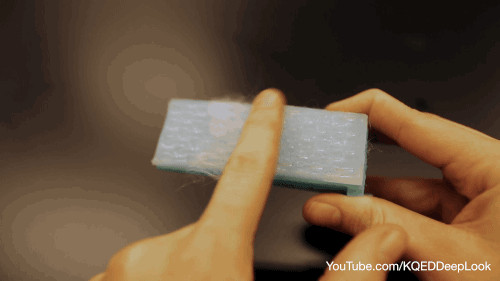 The model is covered in spines that all point in the same direction, making it easier to remove the trapped fur. Photo by Alexis Noel/Georgia Institute of Technology
The model is covered in spines that all point in the same direction, making it easier to remove the trapped fur. Photo by Alexis Noel/Georgia Institute of Technology
The results were striking. Unlike a traditional hairbrush, which requires manual removal of trapped hair, Noel’s cat tongue model was easily cleaned by simply running a finger in the direction of the spines. This innovative design has implications for future grooming tools for both humans and pets, and could even inspire the development of gentler soft robots.
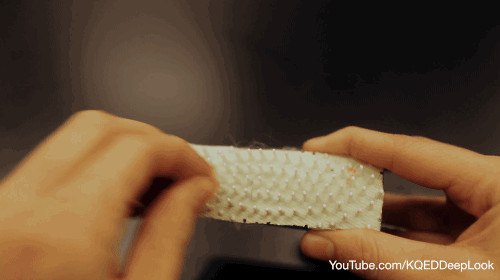 To clean a typical hairbrush, one must pluck the hair from between the bristles. Photo by Alexis Noel/Georgia Institute of Technology
To clean a typical hairbrush, one must pluck the hair from between the bristles. Photo by Alexis Noel/Georgia Institute of Technology
More Than Just Grooming: The Multifaceted Cat Tongue
Grooming is just one facet of the cat’s tongue‘s importance. Cats groom for a variety of reasons. Beyond detangling fur, this process helps to remove parasites and their eggs, and distributes essential oils produced by the skin, contributing to a water-resistant coat. As Noel points out, “Vets will tell you not to clean your cat, because you’re removing all of their protective oils and they have the habit of cleaning themselves.”
Socially, grooming is also significant. Cats groom each other as a sign of trust, and a cat grooming its human is a high compliment, indicating a strong bond.
However, for ambush predators like cats, staying clean is most critically linked to survival. Prey animals possess a heightened sense of awareness, and a whiff of a predator’s scent can be a fatal warning. Meticulous grooming helps cats minimize their odor, increasing their hunting success. This is why wild cats like bobcats are also observed grooming themselves frequently.
 Like house cats, bob cats meticulously groom themselves in order to help hide from prey. Photo by Josh Cassidy/KQED
Like house cats, bob cats meticulously groom themselves in order to help hide from prey. Photo by Josh Cassidy/KQED
The Lapping Experts: Cat Tongues and the Physics of Drinking
Beyond grooming, the cat’s tongue also plays a crucial role in drinking. Cats, as obligate carnivores, have evolved with wide mouths designed for efficiently capturing and consuming prey. Their pointed teeth are perfect for piercing flesh and tearing meat.
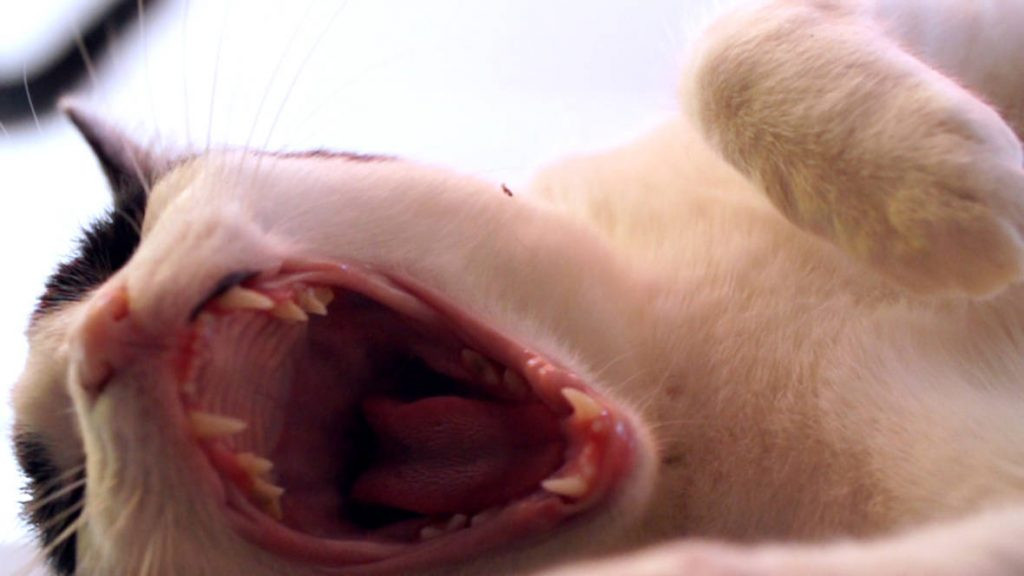 As dedicated carnivores, cat’s pointed teeth perform well when it comes to piercing flesh and tearing meat from the bone. Photo by Josh Cassidy/KQED
As dedicated carnivores, cat’s pointed teeth perform well when it comes to piercing flesh and tearing meat from the bone. Photo by Josh Cassidy/KQED
However, this wide mouth structure presents a challenge when drinking liquids. According to Sunghwan “Sunny” Jung, a researcher at Virginia Tech, “the downside of that mouth shape is drooling.” The wide corners of a cat’s mouth make it difficult to create suction like humans do with their lips. Instead, cats have developed a unique lapping technique to drink, a phenomenon studied extensively by Jung and his colleagues at MIT.
 High speed video shows the column created when cats lap water. Photo by Josh Cassidy/KQED
High speed video shows the column created when cats lap water. Photo by Josh Cassidy/KQED
Using high-speed video, the researchers meticulously analyzed how cats lap water. They discovered that cats use the topside of the tip of their tongues to flick the water surface. “Cats place their tongue on the water surface and then lift the lift the tongue very rapidly and create the nice column of water,” Jung explained. “Before the column pinches off and breaks into two pieces, they bite the column of water and drink it.” This precisely timed bite allows cats to maximize water intake while minimizing mess.
To further investigate the fluid dynamics of this process, the MIT team created a robotic model mimicking the cat’s lapping tongue. This model, a glass disc, was used to determine the optimal speed for drawing water upwards.
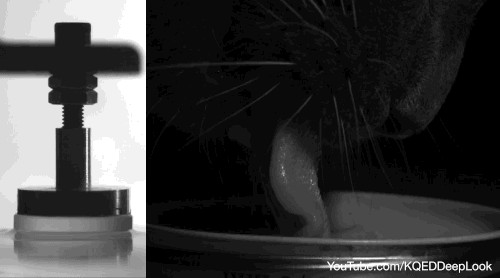 Researchers at MIT used models to study the fluid dynamics involved when cats lap water. Photo by Sunghwan (Sunny) Jung/ MIT
Researchers at MIT used models to study the fluid dynamics involved when cats lap water. Photo by Sunghwan (Sunny) Jung/ MIT
Their findings revealed that domestic cats typically lap at a rate of about four times per second. Intriguingly, larger cat species like lions and tigers lap at a slower rate, but capture a greater volume of water per lap, proportional to their body size.
Unlocking Feline Mysteries Through the Tongue
The cat’s tongue, seemingly simple, is a remarkable example of evolutionary engineering. From the microscopic hooks facilitating meticulous grooming to the sophisticated lapping technique for drinking, this organ is integral to feline survival and behavior. Ongoing research continues to unveil the secrets held within this unique anatomical feature, offering not only a deeper appreciation for cats but also inspiration for technological advancements.
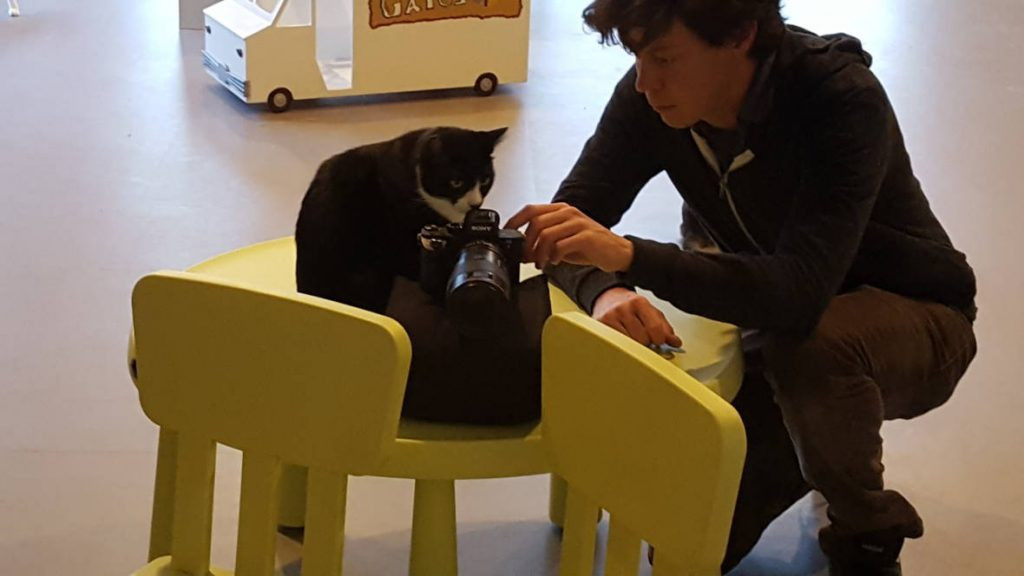 Josh Cassidy (right), Deep Look lead producer and cinematographer, confers with Oreo (left), during production at Cat Town Cafe in Oakland. Photo by Mikel Delgado/Feline Minds
Josh Cassidy (right), Deep Look lead producer and cinematographer, confers with Oreo (left), during production at Cat Town Cafe in Oakland. Photo by Mikel Delgado/Feline Minds
This report was inspired by KQED’s Deep Look. You can view the original report on their website and learn more about Feline Minds.

